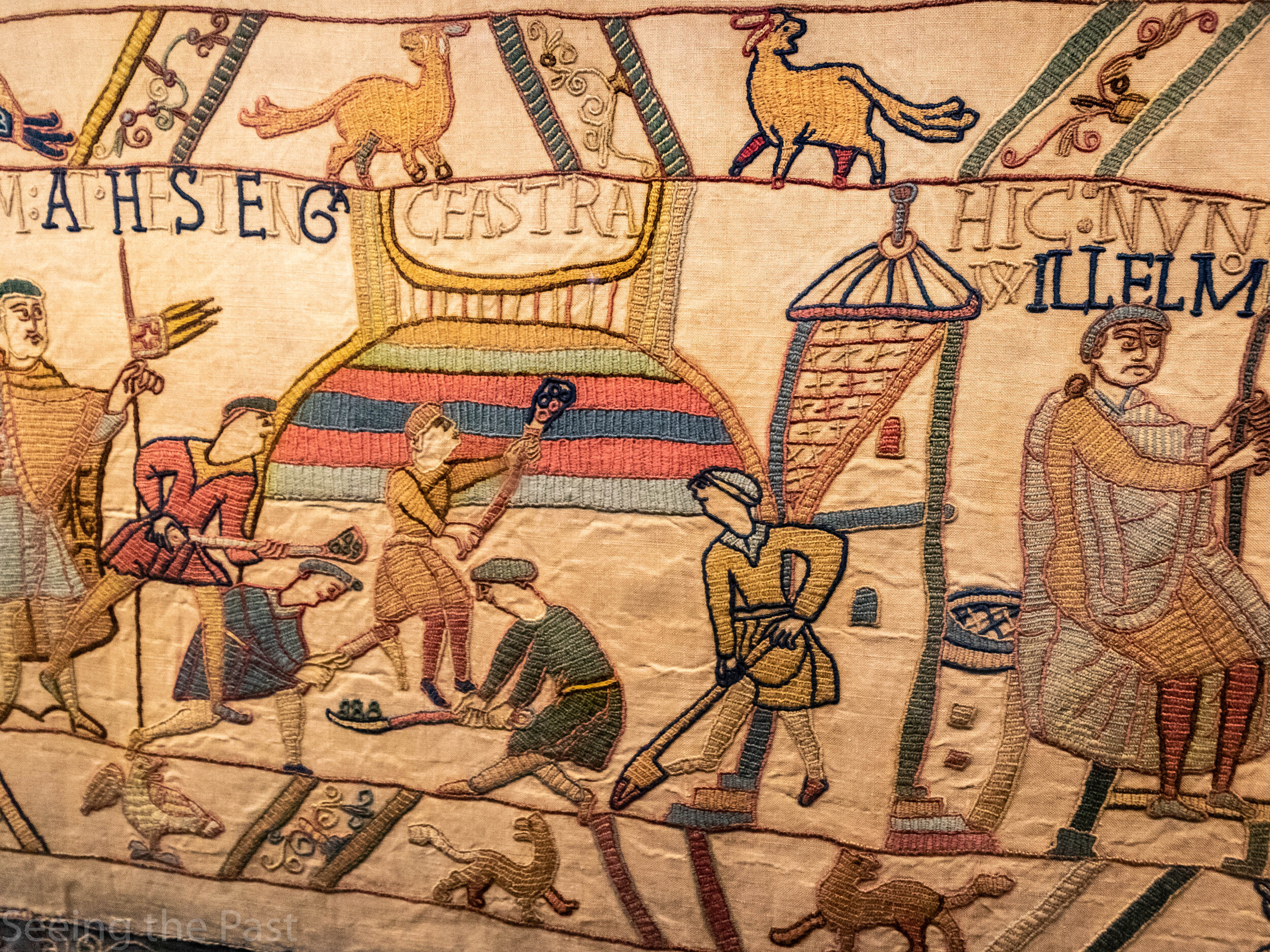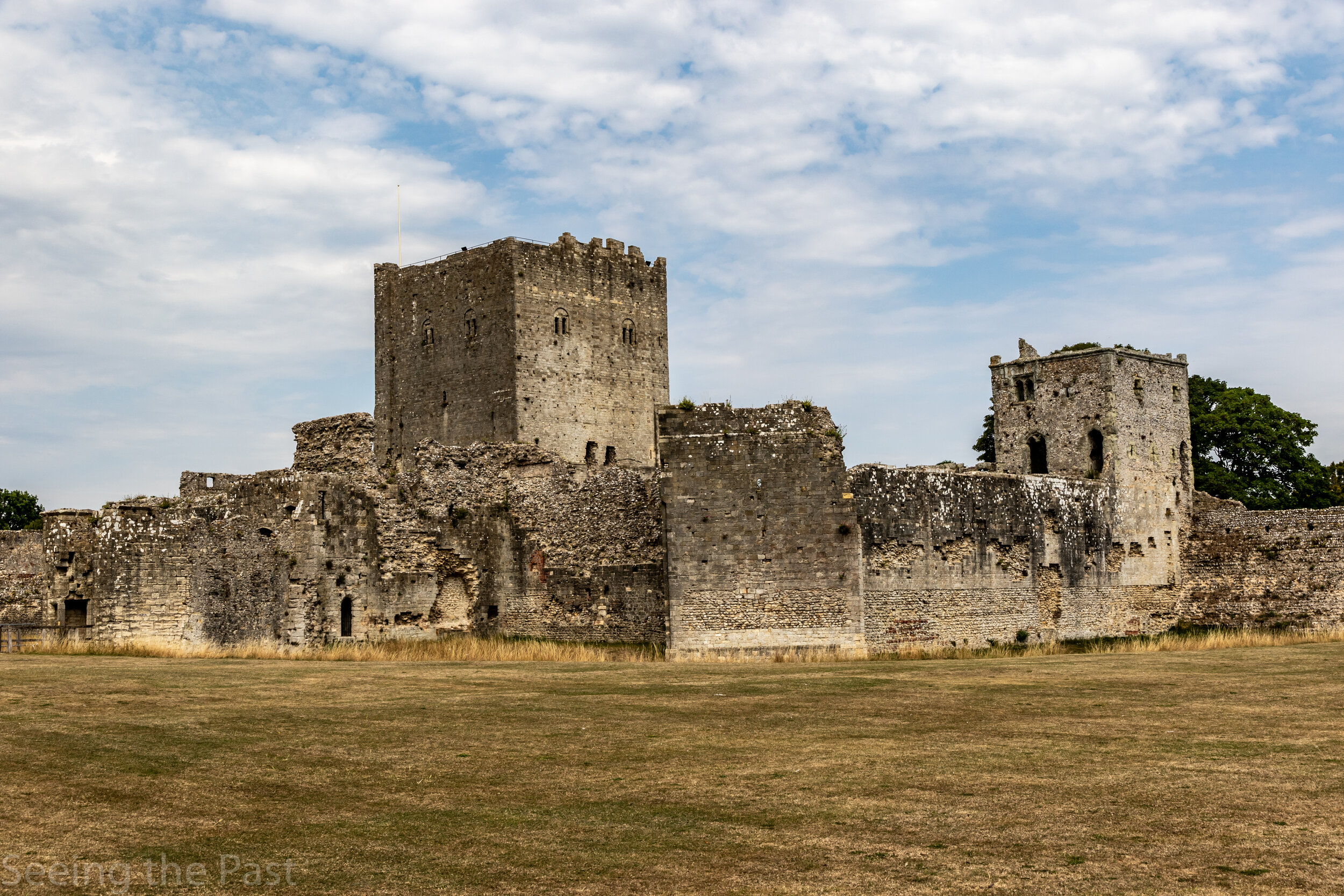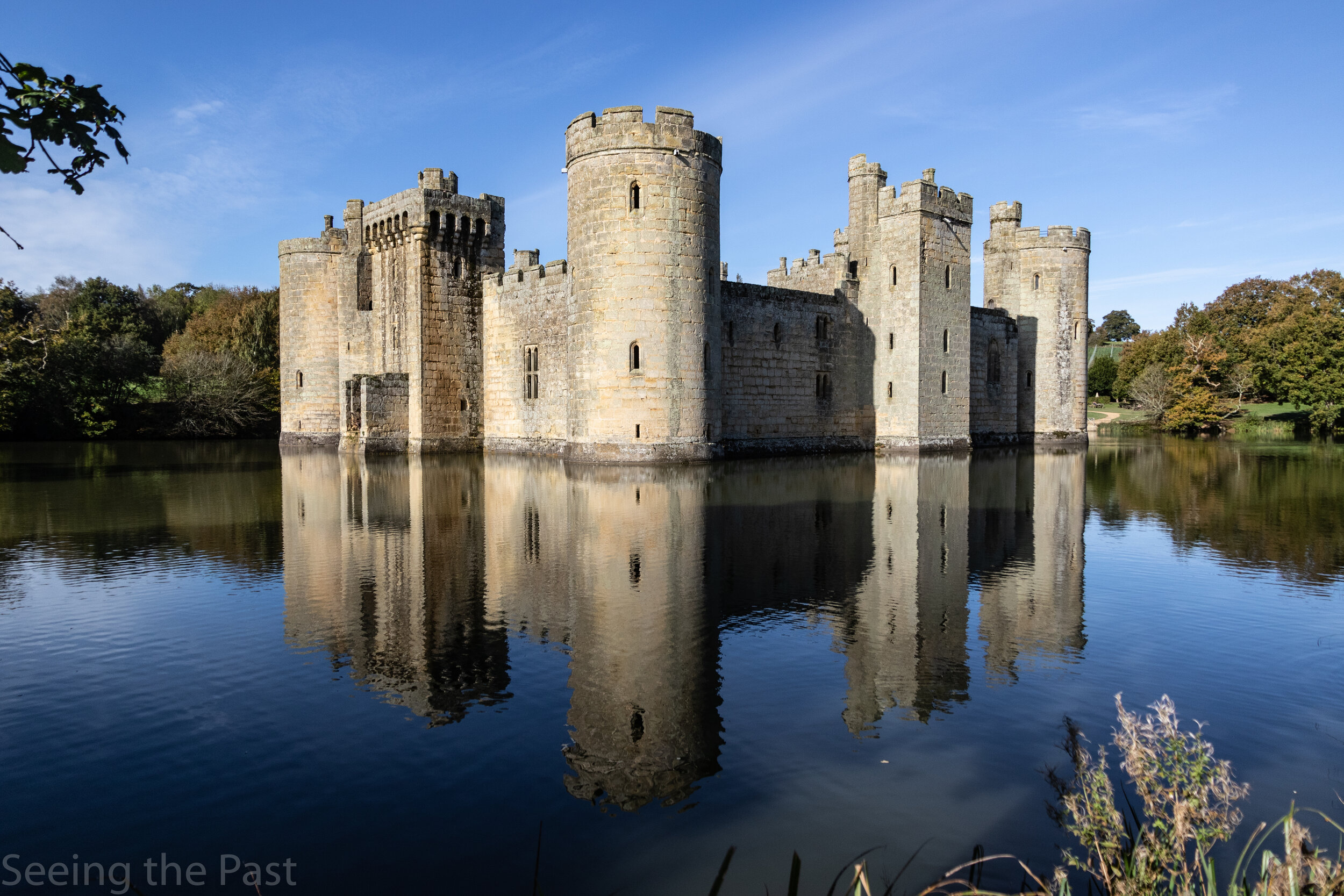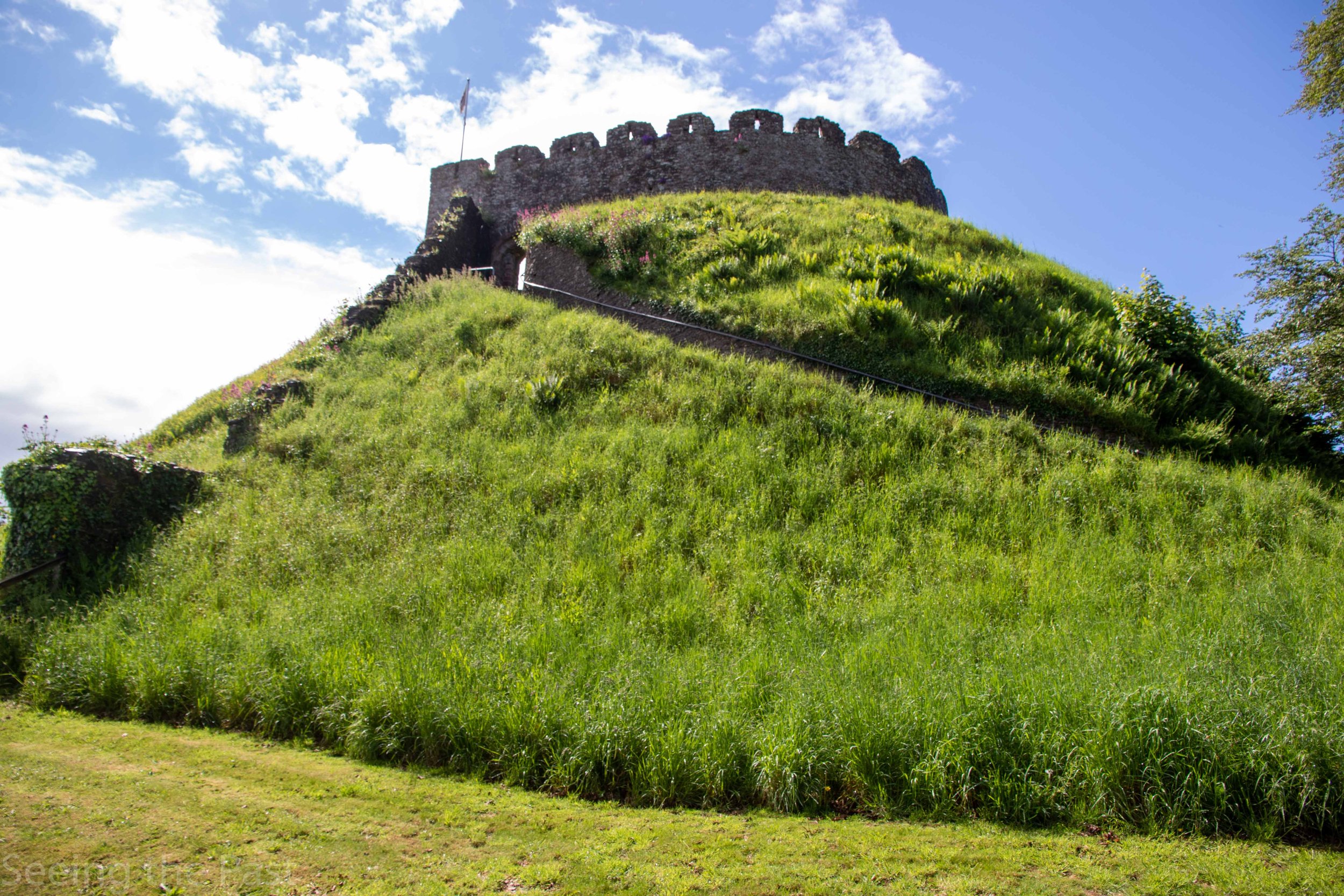Why did people build castles?
/Caernarfon Castle, a beautiful building but why was it built?
Why did people build castles in England? Did the reasons for building later versions of castles change and when did they begin building castles are all key questions to be answered in this blog.
When and how did castles begin?
The story of castles in England really begins with William the Conqueror and his victory in the Battle of Hastings in 1066. Before 1066, a couple of Normans living in England and friends of the English King, Edward the Confessor had built castles but on the whole, castles were not part of the English landscape. When William won the battle, he only had about 8 000 men but unfortunately for him, there were 2.5 million Saxons who loathed him and were prepared to take him on despite him defeating Harold Godwinson, the former king of England. This conquest by a foreigner was not to be tolerated. William knew this and so the main reason for building castles was for his protection and control of the English. William was not only a foreigner, he had a terrible reputation. On arrival in England his men destroyed property in Sussex, pillaging, raping and killing as they went. His cruel reputation was created before he arrived however, with stories of “skinning people alive” and putting out men’s eyes! Protective castles were therefore needed to safeguard a man and his Norman followers from rebellious and vengeful Saxons.
Saxon re-enactors. William needed castles to keep these people under control and ensure his safety, as well the safety of his Norman tenants in chief.
William built castles up and down the country with the idea that soldiers could be based safely there under attack, but could also use it as a base to defend areas nearby and attack potential “troublemakers”. Castles were often about a day’s ride from each other, and so, if one was attacked the neighbouring castles garrisons could gallop across to relieve the castle and its soldiers being besieged. The castles had to be built quickly, William did not have time on his side. As a consequence, the early castles, motte and baileys, were made of wood and soil.
An artist’s impression of a motte and bailey castle.
Castles were not just bases, they were part of the feudal system created to control or suppress the English. The local lord and his knights living in the castle could control the rebellious English through physical force but castles were also symbolic of Norman power and so could psychologically control the locals. The idea was that every time a peasant looked up from working in the fields, hovering over him would be a Norman castle with the message, know your place and do as you are commanded. Near where I live is Windsor castle and it can be seen for miles. It dominates the area even today and would have been very dominating in medieval times. Seeing that every day would certainly put people off from rebelling.
Windsor Castle could be seen from miles around, letting the native English peasants know who was the boss.
The making of a motte and bailey by William the Conqueror from the Reading Museum’s copy of the Bayeux Tapestry.The motte is the stripey mound of earth. The tower has the word “caestra” in it meaning castle and next to it is the word “Hestenga” , meaning Hastings.
So what was the “Feudal System” and how were castles an important to the system?
William needed as much help as possible to run the country and the only people he could definitely rely on were the Normans who helped him win the Battle of Hastings. He needed to reward them for their efforts and sacrifices and thus he gave his key supporters several large chunks of land. He did this by declaring that as king, he owned all the land and therefore could do what he liked with it. His deal with his “Tenants in Chief” or “Vassals” was straightforward. He gave give them a title, the highest in the land below him eg. Earl, Duke etc and some large pieces of land. Their part of the deal was to answer the king’s call to war and bring with them a certain number of knights who would fight for the king for a certain period of time. If they failed to turn up, they would lose their title, land and would be in complete disgrace losing everything including their status. This was a very powerful reason for obeying the king. They would also be expected to advise the king and, above all, control the people below them. To enhance their standing in the locality, they would be allowed to build an impressive castle to dominate the landscape. Not all of the Tenant in chiefs were Norman. A few nobles under Edward the Confessor who had not played a prominent part if any in the Battle of Hastings were allowed to keep their titles and land, but most soon succumbed to rebellion and their number declined.
To persuade the knights to fight, the tenants in chief divided up their land and gave smaller chunks to a knight. The land would have to supply sufficient income to keep the knight, his family and servants in a good standard of living plus generate enough income to pay for good quality armour, weapons and horses. Above all the knight had to be ready to fight and so he had to maintain some form of training. It was not sufficient to get some rusty weapons out of a barn, blow off the cobwebs and wave a sword around on the battlefield. The knight’s estates would confer status above the majority of people, he would have a title and live in a small, but impressive, castle. Working on the estates would be the peasantry who would be controlled by the knight. He would allow them to farm some small pieces of land to keep themselves and their family alive. They would have to work on the knight’s land a few days a week and would not be able to leave without the knights permission. There would be very little time to even think about rebelling and no income to support them if they attempted an uprising. Days away from the fields could mean less food for their family. Payments were also made to the knight at various times of the year and they were not even allowed to bake bread or brew beer on their own property. For using the knights ovens and brewhouse, they had to pay a fee in the form of bread and beer. Hardly anyone drank water because it was often contaminated and so weak beer was the main drink for the whole family throughout the day. Bread and beer therefore were vital for survival and again controlled by the knight. The knight even had to give his permission for a couple to get married and he also administered justice. A castle became central to everyone’s lives, it was where local power rested, as well as local justice and government were administered. As a consequence, towns often grew up around castles although castles were often built where towns had developed.
At the top of the feudal system was King William and early on he built this castle, the Tower of London, to impress everybody in his capital London.
How were these feudal deals made?
The best way to ensure a legally binding deal involving the king, tenants in chiefs and knights, was to involve a religious ceremony. The king would sit on his throne whilst the tenant in chief would kneel before him (note, a literal physical display of who was higher). The tenant in chief would have his hands together as in prayer and would have them pointing towards the king. The king in turn, would have his hands out front and clasping the tenant’s hands. References would be made to God and holy promises would be made to each other. Everyone was religious and so, in theory, would never want to break these promises or vows. The same ceremony with promises would take place between the tenant in chief (higher) and the knight (lower) at a local venue. It was not in anyone’s interest to break their promises.
Castles were created to protect England from foreign invasion.
Both Dover Castle and Portchester castle were built on the coast to stop the French and other possible invaders from being successful. William the Conqueror was constantly worried about possible Viking invasions and consequently, he had to bribe their invasion fleet to return to Scandinavia. The Vikings had allies, fellow Danes, living in the north of England, an area known as the Danelaw and therefore would be a serious threat if they landed and moved to the interior.
Portchester castle.
Dover Castle.
Castles were built to protect important routeways.
Castles were built to protect important road and river transportation. They were also created to protect people living in important towns and their surrounding areas. The photo below shows Windsor Castle which was built right next to the river Thames, an important route into and out of London.
Windsor Castle. Thanks Louise Beaver for the photo.
Castles were built to colonise Wales and maintain English control.
King Edward I of England wanted the Welsh to submit to his authority but they were obviously not keen on the idea. His ultimate plan was to build 4 huge castles in North Wales, station English soldiers there and around them create a walled new town full of English merchants. Conwy, Caernarfon, Harlech and Beaumaris castles were all built to the most modern design to suppress the Welsh inhabitants. Uprisings did take place but never succeeded for very long.
Caernarfon Castle.
Castles were built to show off.
As time moved on, Castle, Castles were used for lords and knights to show off to their neighbours. An example of this is Bodium Castle, a very impressive castle built in 1380. How do we know it is to impress and not for steadfast defence? Simply look closely at the moat and you will see it is on a raised piece of land and so could easily be drained! Look at the windows, they are not very small and so offer little protection to archers but they do let in loads of light which makes life here a little more comfortable than in some castles that are built entirely for defence. The awful thing about this is that the money to finance the castle came from pillaging France in “The Hundred Years’ War”. See my blog on Bodium Castle for full details.
The impressive Bodium Castle.
The moat is higher than the ground on the right and so a few hours with a few soldiers could dig here and easily drain the moat.
Modern “Romantic” or fantasy castles
Neuschwanstein Castle in Germany, is amazing and has appeared more times on Instagram than probably any other castle. It is in beautiful surroundings and takes your breath away. However, far from being medieval, it was built in the mid 19th century and the original design before an architect helped out was from a set designer! Its function was to look romantic and make it easy for people to dream of princesses looking out from the towers waiting to be rescued by a handsome prince. It is straight out of a Disney set except Disney was not around at the time! It is great fun to see and to photograph.
Neuschwanstein Castle. Its foundations were laid in 1869.
To summarise why castles were built.
To defend the new King William I and the Normans in a foreign country, England, from the vengeful English.
To use a bases to attack potential troublemakers, restore order and maintain Norman control.
To be a physical support of the feudal system to maintain and enhance Norman control. This control meant local people had to look to the owner of the castle for local justice and government of their lives.
To be a psychological reminder to all Englishmen that the Normans were now in control and to not consider rebelling.
To be a place of safety for Norman lords/tenants in chief and knights against rivals and troublesome locals.
To act as a royal palace, a base for royal soldiers and a place of safety for Kings of England.
To protect towns, trading routes and local people. Hence castles became very important in ordinary people’s lives.
To be be a base to colonise the Welsh.
To be a base to repel any foreign invasion.
To act as a status symbol, to show off to other lords, rivals and locals.
Lastly, to be a romantic, fairy tale castle.
Follow us on social media
Articles that may interest you

































As you wander around Kenilworth Castle it morphs from Medieval Fortifications to Tudor Palace and its story features John of Gaunt of medieval times to an Elizabethan love story involving Robert Dudley, aka the Earl of Leicester and Queen Elizabeth I. The castle was involved in the longest siege in English history and is an amazing place to explore. It features a huge square keep, the ruins of a medieval palace , Queen Elizabeth’s apartments and a reconstructed ornate garden created out of love for her.